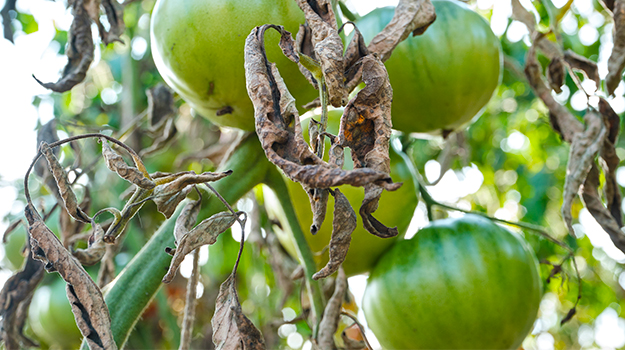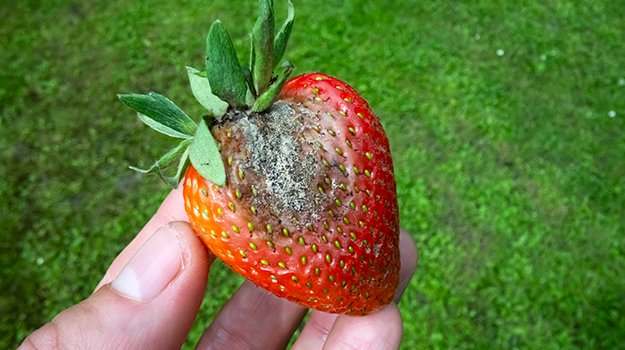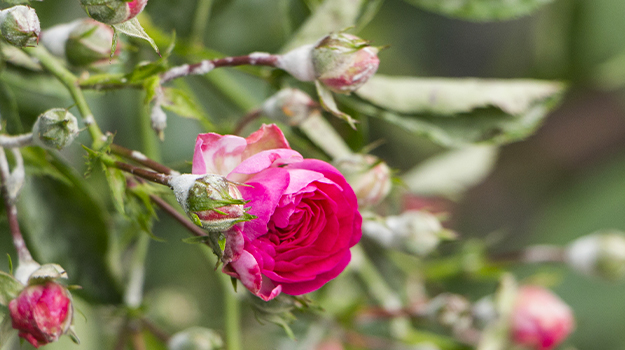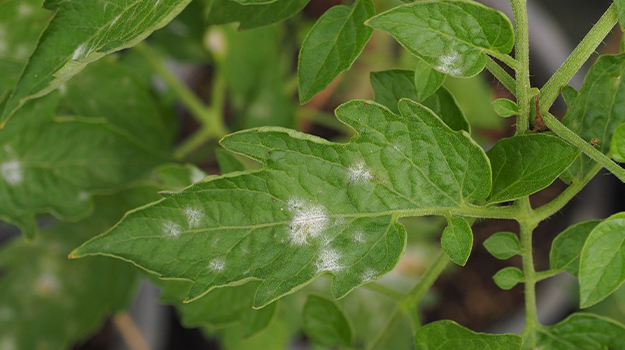Also called “oidium”, powdery mildew is well-known to gardeners. Several plants are sensitive to it, including tomatoes. This fungus belongs to a large family that attacks vegetables as well as fruits, roses, perennials and more.
It is more present in May or September since the humidity and significant temperature differences between night and day favour its appearance.
What are the symptoms of powdery mildew in tomatoes?
Powdery mildew is easy to recognize from the first signs: the leaves, stems and flowers of the plants become covered in a white, floury powder. The leaves become deformed, curled and swollen, eventually drying out. Young shoots will etiolate.
Which plants are sensitive to powdery mildew?
Although it’s not always the case, plants with dense foliage are sometimes more vulnerable.
- Roses
- Perennials (larkspur, beebalm, phlox, coreopsis, coneflower, aster)
- Annuals and bulbs (begonia, dahlia, gerbera)
- Trees and shrubs (lilac, hydrangea, caragana, crabapple, chokecherry)
- Fruit (melon, strawberry, currant, vine)
- Vegetables (tomato, squash, cucumber, zucchini)
How to prevent and treat powdery mildew
Just like the weather, growing conditions play an important role in the development of powdery mildew. While it's hard to predict Mother Nature's mood, the disease can be prevented through good practices.
- Prune shrubs and clear the centre of rose bushes so that the air and sun can penetrate between the branches.
- Respect the recommended planting distances.
- Clean around and at the base of the plants. Do not leave any debris on the ground.
- Remove the leaves and parts of plants affected by the disease immediately (do not compost them).
- Avoid watering plant foliage… especially in hot weather!
- Treat disease-prone plants preventively or opt for less sensitive varieties.
- Treat diseased plants with sulphur concentrate.
- Clean up the garden at the end of the season. The pathogen overwinters on fallen leaves, and the spores spread in wet weather the following spring.
- Treat the disease by spraying the plants with a sulphur-based solution (avoid treating in very hot weather). Note that treatments must be done early. When more than 15% of the plant is affected, they are rarely effective.
PRO TIP: Fungicides applied to the leaves with a spray prevent the growth of spores. The most effective are fungicides that contain sulphur or baking soda.




